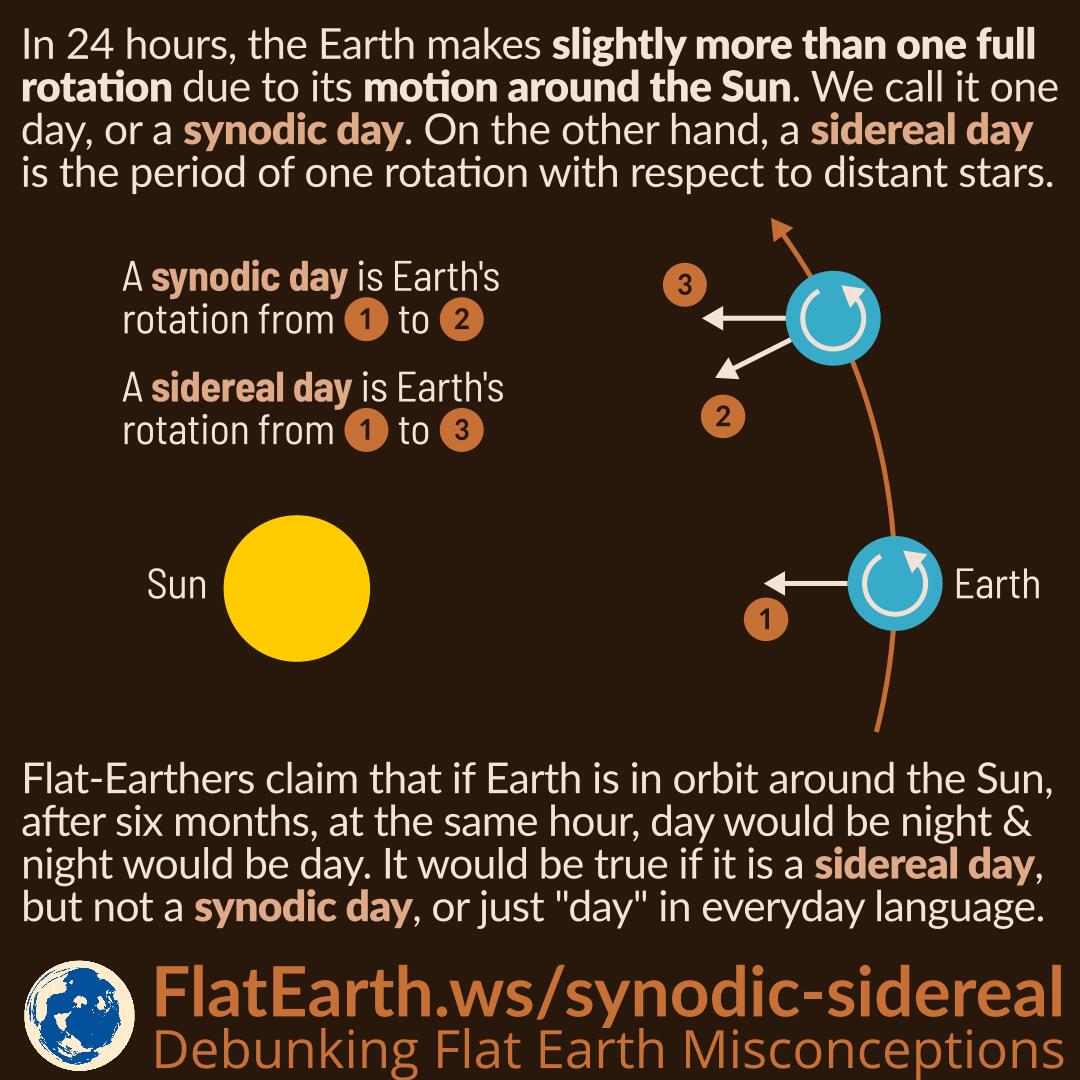In 24 hours, the Earth makes slightly more than one full rotation due to its motion around the Sun. We call it one day or one synodic day. On the other hand, a sidereal day is the period of one rotation relative to distant stars.
Flat-Earthers claim that if the Earth is in orbit around the Sun, after six months, at the same hours, then the day would turn into night and night would turn into day. In reality, it would have been true if we are using sidereal day, not synodic day, or just “day” in our everyday language.
A synodic day —or just “day”— is the period it takes for a planet (like the Earth) to rotate once in relation to the star it is orbiting (like the Sun). For Earth, the length of a synodic day is 24 hours.
A synodic day is distinguished from the sidereal day, which is one complete rotation in relation to distant stars. A synodic day is from “sunrise to sunrise,” whereas a sidereal day is from one rise of a given star of reference to the next.
The length of a synodic day and the sidereal day is different due to Earth’s motion around the Sun. The position of the Sun shifts about 1° every day relative to distant stars. The fact is reflected in the difference in the length between a synodic day and a sidereal day.
A synodic day is what we call “day” in everyday language. We divide one synodic day into 24 hours. Because a synodic day is slightly more than one full Earth’s rotation, a sidereal day is slightly shorter than 24 hours. A sidereal day is 23 hours, 56 minutes, and 4.0905 seconds. The difference of a sidereal day and a synodic day sum up to a single day in a year.
References
- Sidereal time – Wikipedia
- Synodic day – Wikipedia


